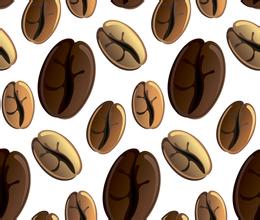Pure Puerto Rico Fine Coffee Flavor Aroma Description

The history of coffee in Puerto Rico dates back to 1736, when coffee seedlings were brought into the country by early Spanish settlers. In the 18th world, sugar cane was the main economic crop, so little attention was paid to it. At the beginning of the nineteenth century, the French began to emigrate from the Corsica island in the Mediterranean to Puerto Rico because of European politics. Crowded by the Spaniards, many French settled in Yaoke Yauco in southwestern Puerto Rico. Yaoke's geographical environment is more hilly, so the French decided to grow coffee. After half a century of hard work, the quality has been affirmed by the market, which has established the position of Yauco Selecto coffee in the market in the future.
In the 1860s, the coffee produced in the Yaoke area of Puerto Rico won the reputation of high-end coffee and spread all over Europe. At that time, emperors and queens of various countries regarded it as the best coffee, and the kings and queens of many countries and European popes even recognized only Yaoke coffee when they chose coffee. Puerto Rico, the royal coffee designated for the Holy see, is located in the eastern part of the Greater Antilles in the Caribbean, including Puerto Rico and small islands such as Vieques and Culefra. It is an island with very beautiful scenery. It is bordered by the Atlantic Ocean to the north, the Caribbean Sea to the south, the United States and the British Virgin Islands to the east, and the Mona Strait to the west, bordering the Dominican Republic. Puerto Rico has a land area of 13790 square kilometers, with mountains and hills accounting for 3x4 of the island. The central mountain range stretches from east to west, stretching from the center to all sides, from high to low, and the coast is a plain. The highest peak, Mount Pengta, is 1338 meters above sea level. Belongs to the tropical rain forest climate, the rainfall is abundant, the average temperature in January is 24 ℃, the average temperature in July is 27 ℃. Vulnerable to hurricanes, with an annual average temperature of 28 ℃. These climatic environments are very suitable for coffee trees to grow in the coffee industry. When it comes to coffee produced on islands, I think everyone must be no stranger to the Blue Mountains of Jamaica and Kona of Hawaii, both of which are famous boutique coffee. In fact, if we talk about coffee from island origin, there is another kind of coffee that is worth talking about and tasting, and that is Puerto Rico. If you look for its location on the earth, it may not be easy to find. Let's learn about it together.
In 1736, the first coffee tree was introduced to Puerto Rico from Martinique. Since then, Puerto Rico has become the base for producing the highest quality coffee in the world. The unique taste chosen by Yaocote has also become the object of admiration of coffee experts all over the world. Most of the earliest coffee trees were planted by immigrants from Corsica. About 160 years later, the coffee industry in Puerto Rico has an extremely optimistic outlook, ranking sixth in the world in terms of total exports, and most of their coffee is shipped to Europe, including France, Italy and Spain. Coffee farms in Puerto Rico flourished until the 19th century, but unfortunately, the rise of sugarcane and drug farming and the effects of hurricanes and wars lagged Puerto Rico's coffee industry.
Today, Puerto Rican coffee is exported to all parts of the world. As the coffee in this country is generally carefully cultivated, it is pure, fragrant and granular, among which the best is among the world's famous brands. The best coffee is Yaocote (Yauco Selecto), which means "Selecto". Grand Lares Yauco is produced in the southwest of the island, while Lars coffee is produced in the south-central part of the island.
Yaocote's coffee, grown on three farms in the southwest of the island, is fragrant and has a long aftertaste. This kind of coffee is very expensive and its flavor is comparable to that of any other coffee variety in the world. In the Yaoke area, the coffee is owned and operated by the local planter. The mountain climate here is mild, the plants have a long mature period (from October to February), and the soil is of high quality clay. Some old varieties of Arabica coffee beans are grown here, although the yield is lower than other varieties, but generally of high quality. People here have been using an ecological and intensive planting method, using only some low-toxic fertilizers and chemicals, and taking mixed crop planting measures to make the soil more fertile. When it comes time to pick coffee beans, people walk back and forth between coffee trees, picking only fully ripe coffee beans, and then wash them in a roller device for 48 hours.
Yaocote chooses coffee beans to be kept in shells before they are shipped and the skins are not removed until the order is shipped to ensure the best freshness of the coffee. Relevant U.S. government staff, such as FDA and USEA, will also be present when the goods are submitted, and they work to monitor producers' compliance with federal regulations. There are also staff from the local evaluation board, who take 1 bag out of every 50 bags as samples and use international gauges to evaluate their quality.
Yaocote selected is a fascinating coffee, it has a complete flavor, no bitterness, rich nutrition, rich fruit, worthy of all coffee lovers to savor carefully.
Puerto Rico's coffee beans are carefully planted, pure, fragrant and heavy, of which the best coffee is Yauco Selecto, which means "Selecto". Yaocote Coffee is grown only on three farms in the southwest of the island, San Pedro, Caracolillo and La Juanita. It is a truly high-quality coffee with a strong flavor and a long aftertaste. The hills of southwestern Puerto Rico have a mild climate, a long period of plant maturity (from October to February) and high-quality clay. People here have been using an eco-friendly, intensive planting method, picking only fully ripe coffee beans and then flushing them in a drum device for 48 hours. Yaocote selected coffee beans are preserved with sheepskin before sale and will not be removed until order and delivery to ensure the best freshness of the coffee. Relevant U.S. government employees, such as FDA and USEA, will also be present at the transaction, and they are here to monitor producers' compliance with federal regulations. There are also professional reviewers who randomly take one bag of coffee from every 50 bags as samples and use international gauges to identify the quality of the coffee beans, all to ensure that the quality of the real Yaocote selected coffee is sold in Spanish. Puerto Rico means "port of wealth".
Important Notice :
前街咖啡 FrontStreet Coffee has moved to new addredd:
FrontStreet Coffee Address: 315,Donghua East Road,GuangZhou
Tel:020 38364473
- Prev

A brief introduction to the treatment method of grinding degree and baking degree of Burundi boutique coffee beans
Total score (maximum 100): not applicable strength / main attributes: strong / sweet, fruit flavor, spicy aftertaste. Recommended roasting degree: full city Burundian coffee features: Burundi has the most diverse and successful coffee industry in the world, and has its own characteristics. Burundian coffee is fragrant and has excellent acidity.
- Next

Chocolate Nutty Puerto Rico Fine Coffee Origins Development History Culture Introduction
Tree planting, micronutrients brought by the marine monsoon, careful handling and monitoring of all aspects, and the working environment of American standards all make Yauco Selecto's price double. Yauco Selecto's accolades to date include: 1. Harrods, England's premier department store, listed it as one of eight coffees on sale as a rare coffee; 2. New York's most popular coffee.
Related
- Detailed explanation of Jadeite planting Land in Panamanian Jadeite Manor introduction to the grading system of Jadeite competitive bidding, Red bid, Green bid and Rose Summer
- Story of Coffee planting in Brenka region of Costa Rica Stonehenge Manor anaerobic heavy honey treatment of flavor mouth
- What's on the barrel of Blue Mountain Coffee beans?
- Can American coffee also pull flowers? How to use hot American style to pull out a good-looking pattern?
- Can you make a cold extract with coffee beans? What is the right proportion for cold-extracted coffee formula?
- Indonesian PWN Gold Mandrine Coffee Origin Features Flavor How to Chong? Mandolin coffee is American.
- A brief introduction to the flavor characteristics of Brazilian yellow bourbon coffee beans
- What is the effect of different water quality on the flavor of cold-extracted coffee? What kind of water is best for brewing coffee?
- Why do you think of Rose Summer whenever you mention Panamanian coffee?
- Introduction to the characteristics of authentic blue mountain coffee bean producing areas? What is the CIB Coffee Authority in Jamaica?

